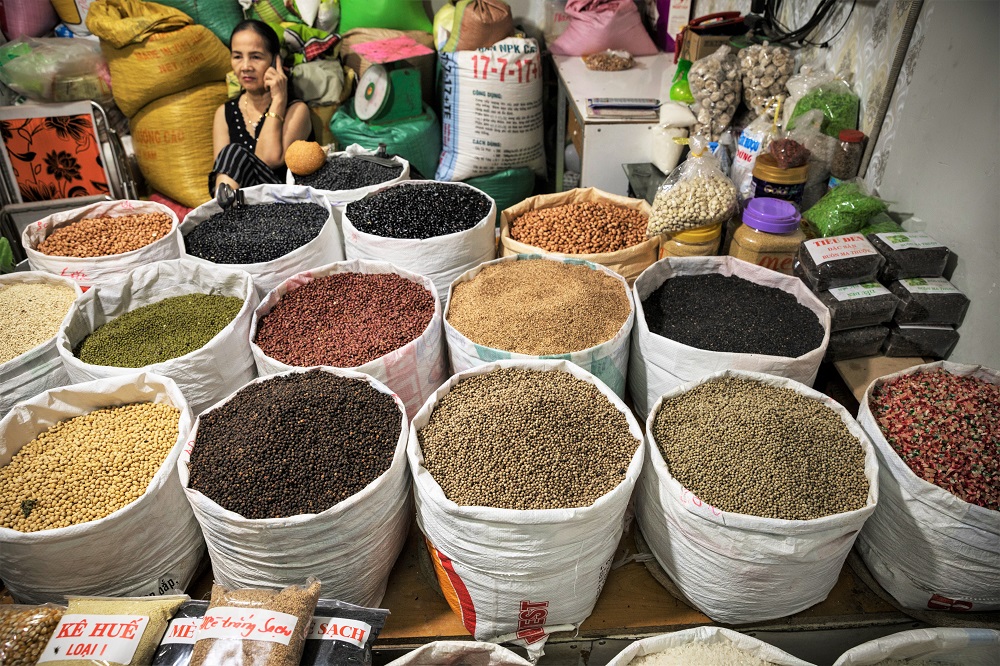
CASA puts the spotlight on the challenges and opportunities in sourcing from smallholder farmers
June 4, 2021
Worldwide, there are around 500 million small-scale farmers. They have the potential to be both a supplier base and a market for a wide range of businesses.
A new report Sourcing from Smallholders: Complex Challenge or Commercial Opportunity? Perspectives from Investors and Agribusinesses assesses the potential commercial and development impact of agribusiness models involving small-scale producer in formal value chains in Africa and Asia. It does this by drawing on perspectives from 15 investors. It also attempts to quantify investments flowing to agribusinesses sourcing from small-scale producers.
The report was discussed at the May CASA Breakthrough Webinar which can be viewed on the CASA YouTube channel. In the opening section of the webinar, Melanie Machingawuta from the CASA Technical Assistance Facility provides a great precis of the report. A One-pager (summary of the webinar discussion points) is also available which highlights the main points made by: Cara Middleton – IDH Investment Management; Marcel Neutel – Capital 4 Development Partners (C4D); and Edward Stiles – Maris Ltd.
The report noted investors saw advantages in sourcing from small-scale producers. These include:
- Improved supply volume and diversification
- Optimised processing economics
- Reduced sourcing costs
- Increased sales prices
- Gaining social and political license to operate
- Better terms on capital
Low-margin and staple crops, such as maize, tended to allow agribusinesses to maintain a larger smallholder supplier base, driving breadth of impact. But investors noted that higher-margin crops, such as fruit and vegetables for export, generally present more interesting investment opportunities and the chance for deep impact. Climate uncertainty increasingly means irrigation is required in many areas. The economics of irrigation favour high-value crops. Investors noted that where value additions could be introduced in the value chain, a premium could be passed on to farmers.
The most common challenges of this model were perceived to be ensuring sufficient quantity and quality of raw materials through efficient aggregation models. Investors highlighted the key role of crop unit economics, upstream support services and trust-based relationships with farmers in making this sourcing model successful.
Mark Joenje, Partner, C4D Partners noted: “Sourcing from smallholders is not only about farming. It’s about relationships, people management, understanding local culture and customs. It’s within those circumstances that you then have to optimise for quality and yields.” This theme was picked up by his colleague Marcel Neutel in the webinar.
Providing upstream support to smallholder farmers help agribusinesses achieve the yields and quality standards they need, reduce post-harvest losses and achieve certifications (such as Ecocert). It can be the difference between usable and unusable crops. Investors were in broad agreement that farmer training made economic sense.
In most cases, small-scale producers were part of out-grower schemes. In planning to source in this way geography, infrastructure and connectedness are important factors. Policy and political contexts also have to be supportive.
Agtech software can increase the commercial viability through improved smallholder management processes at scale, for example by digitising smallholder data collection and analytics. However, it is hard for investors to find opportunities in agtech companies that are already at scale.
The report offers five take-aways for investors:
Investors should map the investment gap through systematic classification and tracking of smallholder-sourcing agribusinesses to provide greater clarity on this ‘asset class’. This can improve guidelines on the blend of capital and technical assistance (TA) required to boost effectiveness.
Agribusinesses should invest in thorough upfront analysis including supply chain, context and end-market analysis, before implementing a small-scale producer sourcing model. In-depth, early analysis helps manage the complexities of the models. This analysis should also pinpoint where private capital should be deployed when commercial gains are evident and highlight the gaps where public funding is needed. This point was picked up by Edward Stiles of Maris Ltd in the webinar.
Partnerships between investors, donors and agribusinesses provide essential upstream support to smallholder suppliers.
Investors could establish agricultural investment vehicles with longer investment horizons than the typical venture capital or private equity timeframes. An example would be a permanent capital vehicle (PCV), with flexibility for investments to generate returns at their own rate.
Agribusinesses and investors should leverage monitoring and impact measurement to improve business operations and integrate impact data into existing management systems.
In addition, all the investors at the webinar talked about issues of reliable quality and quantity of supply from small-scale producers. Cara Middleton explained that placing a large focus on cost-efficiency, quality and quantity across long-term investment horizons with availability to scale and replicate, leads to greater achievement.
Other resources:
Read: How can we change investor thinking and behaviour on agribusinesses with smallholder supply chains? A blog from CASA associated Jon Burns [February 2021]